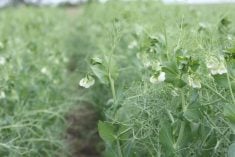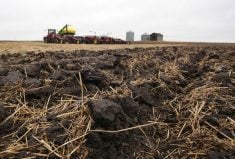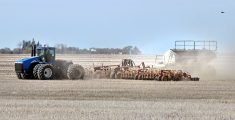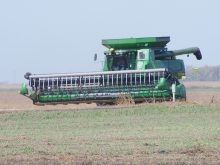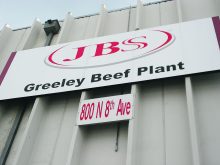The ability to measure carbon sequestration from the air will give producers a better idea of what’s stored in their soil
CALGARY — Scientists suspect prairie producers are sequestering as much carbon in their fields as is being emitted by Alberta’s oilsands.
Researchers may soon be able to measure and verify carbon sequestration more accurately and easily from above, said Lenore Newman, director of the Food and Agriculture Institute at the University of the Fraser Valley in British Columbia.
Related stories:
- The payoffs and pitfalls of voluntary carbon offset
- Carbon credit market must better serve farmers: prof
- Cellular agriculture gets a close look
- Cellular agriculture takes next step in Alberta
Read Also

Bunge’s crop mix is changing
Bunge has predominantly been a soybean processing firm, but that’s about to change after the merger with Viterra with softseed processing and grain merchandising gaining ground.
Advances in drone and satellite technology could allow farmers to finally be paid for an essential service that is often overlooked in the conversation about greenhouse gas emissions from agriculture, she said.
“Once that’s possible, that is a revenue possibility,” she told about 500 delegates at the recent CrossRoads Crop Conference in Calgary. “And that’s the one that all of your industry associations have to carefully watch because right now in Canada, we are kind of a leader in this.
“There’s a lot of talk about creating a market, so there would literally be a carbon exchange with a carbon coin. You guys are sequestering carbon. You should get paid for doing that.”
However, Newman warned that producers will likely have to fight for it as everyone tries to get their share of the pie.
“A lot of this was driven by the Westons, the McCains, the Loblaws of the world, and the key to it all … is unlocking that measurement.”
She spoke as part of the conference’s opening keynote address, titled Agriculture Innovation – Examining the Future of Food Production. Newman said she expects it will take five years at most before farmers can directly measure carbon sequestration from above rather than using the current cumbersome and laborious methods.
“Now, of course, we can measure carbon in the ground, but you’ve got to dig a hole, and that’s not practical,” she said during an interview. “And so, we’re looking at drone applications, satellite applications, and using computer models to estimate. There’s a lot of companies trying to crack this holy grail of measurement and verification.”
Advanced mathematical models could allow farmers to tweak their practices by estimating the impact of different strategies to sequester carbon, she told the conference.
“And I would urge the farmers I’ve worked with to start to benchmark carbon and their carbon emissions, adopt best practices, note down everything they’re already doing, keep the receipts to get ready for this market because it will come to us.”
The grain and pulse sectors, or almost any type of broad-acre farming, represent one of the few industries that are sequestering more carbon than they emit, said Newman during the interview. Canada’s agriculture industry is well placed to make the most of this advantage because it is one of few in the world operating at a large scale in terms of acreage and the ability to improve sequestration.
“They can sell that offset to an industry say, like the oilsands, and there actually are soft calculations, and it’s all guesswork right now still, that the prairie farmers produce more sequestering than the oilsands produced emissions, so it balances out.
“And you can have a transfer of funds going from the consumer back to the farmer who’s actually putting the carbon away for you, and you put a price on that.”
Newman told the conference that advances in technology are about to affect farming in other ways. Precision fermentation is already creating food products sold at grocery store chains in the United States, including a low-calorie ice cream made with dairy proteins that are brewed much like beer.
“The link here, this fits directly in an area I call protein conversion where we take waste starches, waste products, anything in the grain and pulse realm maybe that we can’t sell one year or something, we convert it into proteins through precision fermentation.”
The Prairies are a natural place to scale up precision fermentation because farmers already grow the feedstock, said Newman.
“So, the Alberta sugar beet industry, it’s a natural fit, but most importantly, you can use starch, which is a waste product. In many cases, you can also feed grain into this (feedstock), and it’s why we feel Canada has an advantage.”
She expects precision fermentation will be operating at scale in Western Canada within five years.
“There’s some very large groups on the Prairies looking at how to leverage oil and gas technology to build large-scale plants to do this.”
Precision fermentation falls under the umbrella of cellular agriculture, which aims to create animal products from non-animal feedstocks, said Newman. Although demand is soaring for animal products because Asia, India and Africa are increasing their protein consumption, it will be hard to scale up production by only using traditional methods of raising cattle.
“(Canada’s) got lots of places to grow beef here, and we do, but the world wants more than we can produce, and currently 40 percent of the Earth’s non-glaciated land surface is already used for agriculture, so it’s hard to expand.”




